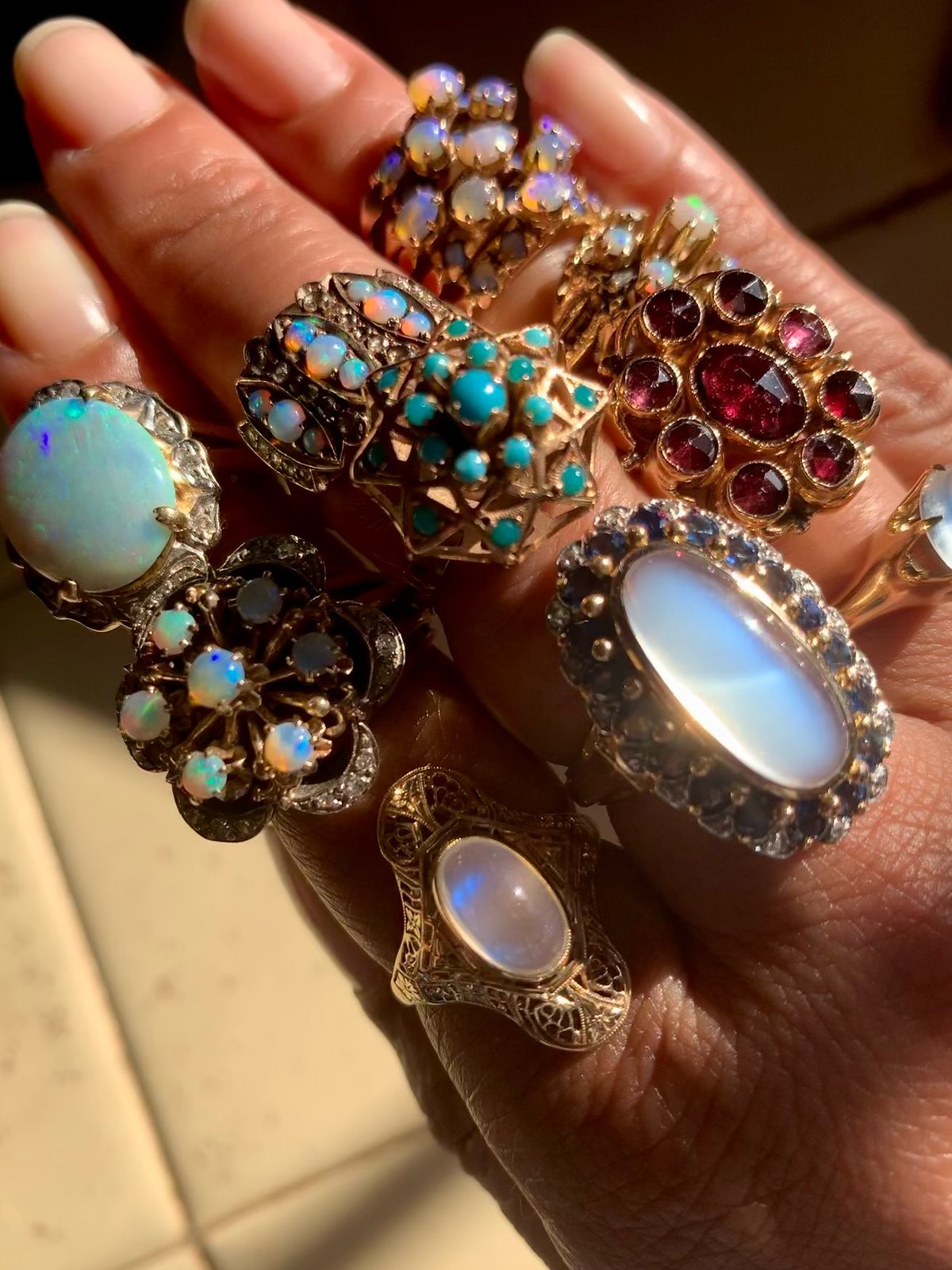#Jewelry #Collection #Story #Nia #GemCorps #Gem #Gossip #Jewelry #Blog
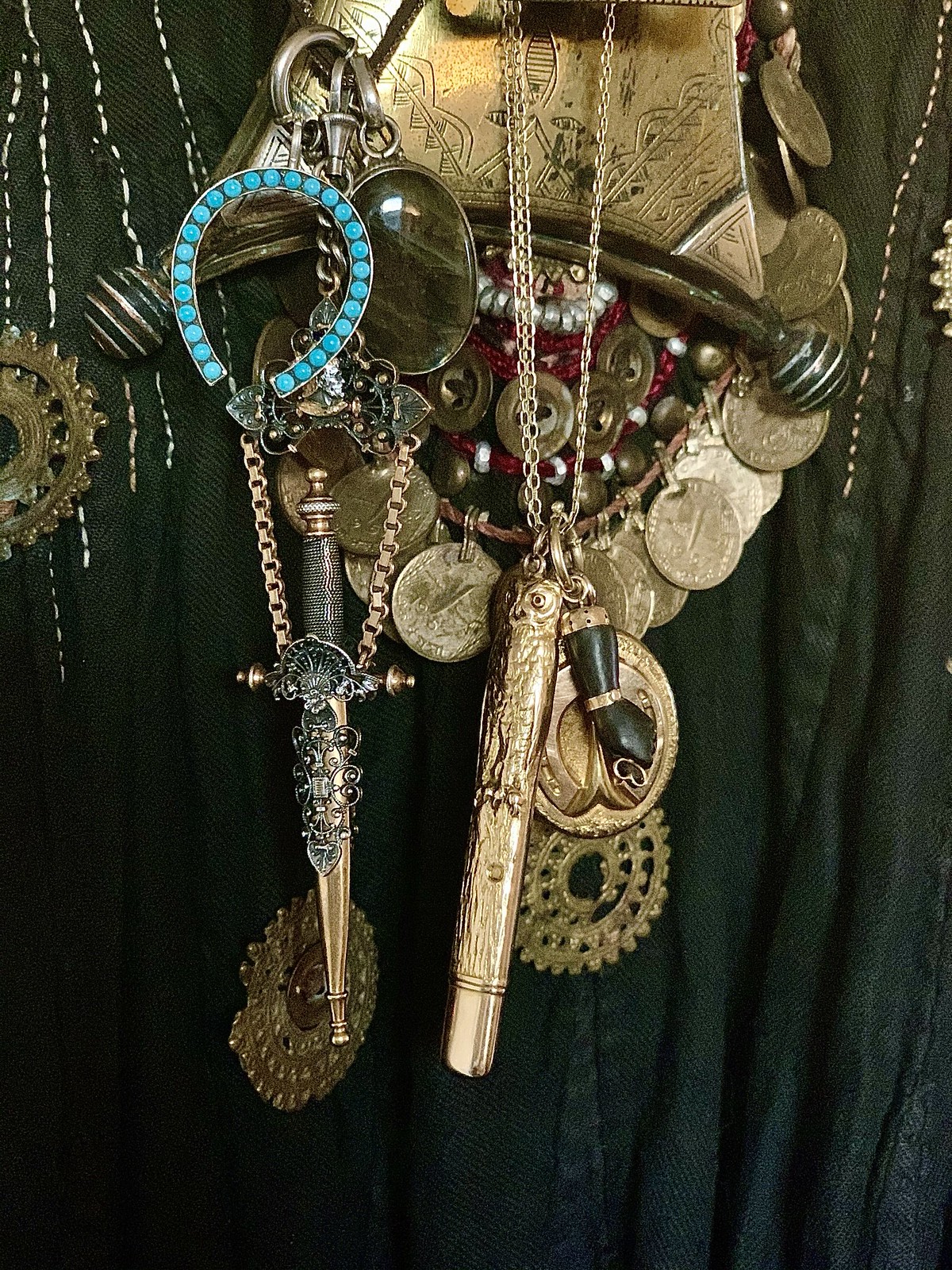
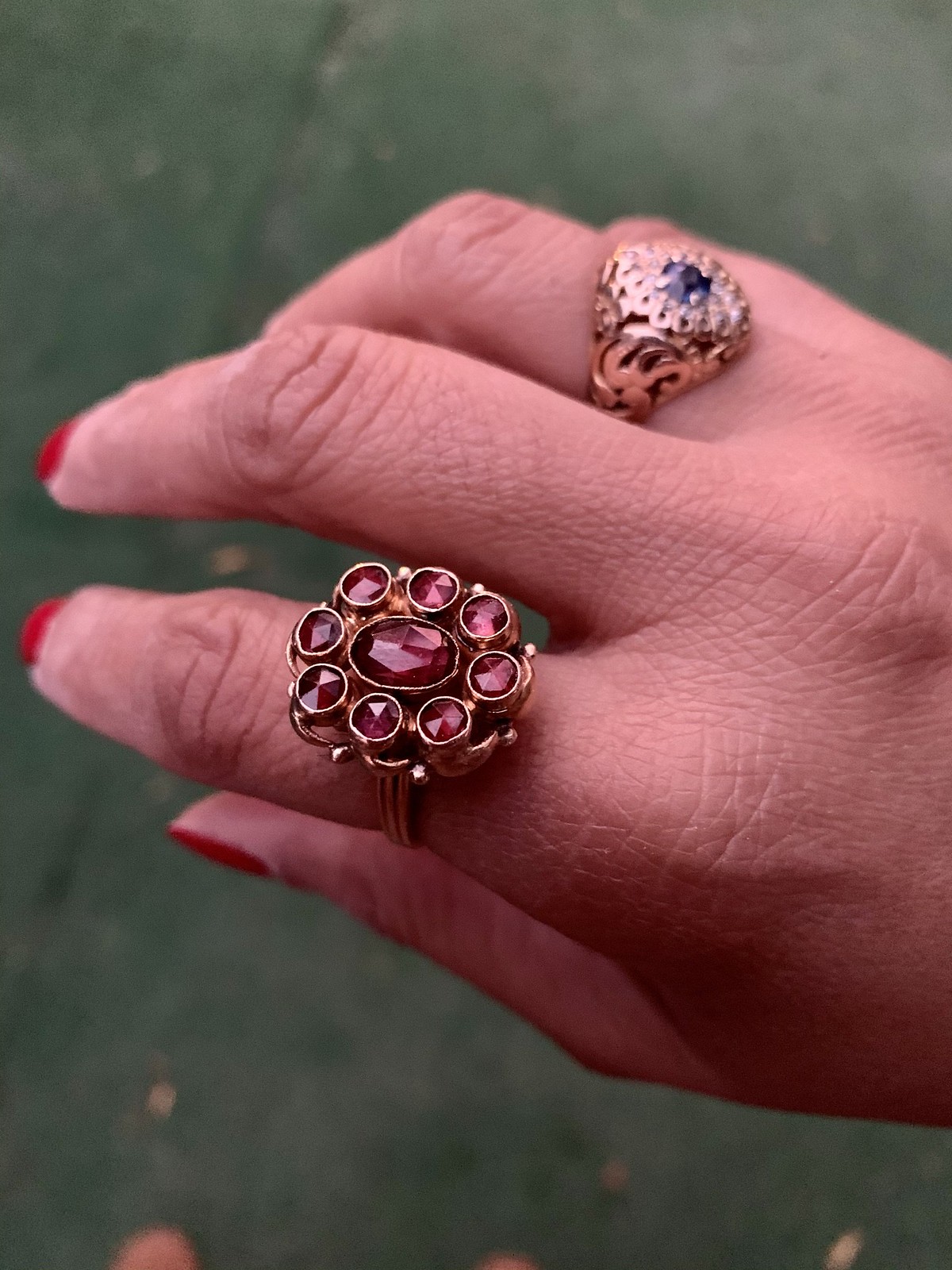
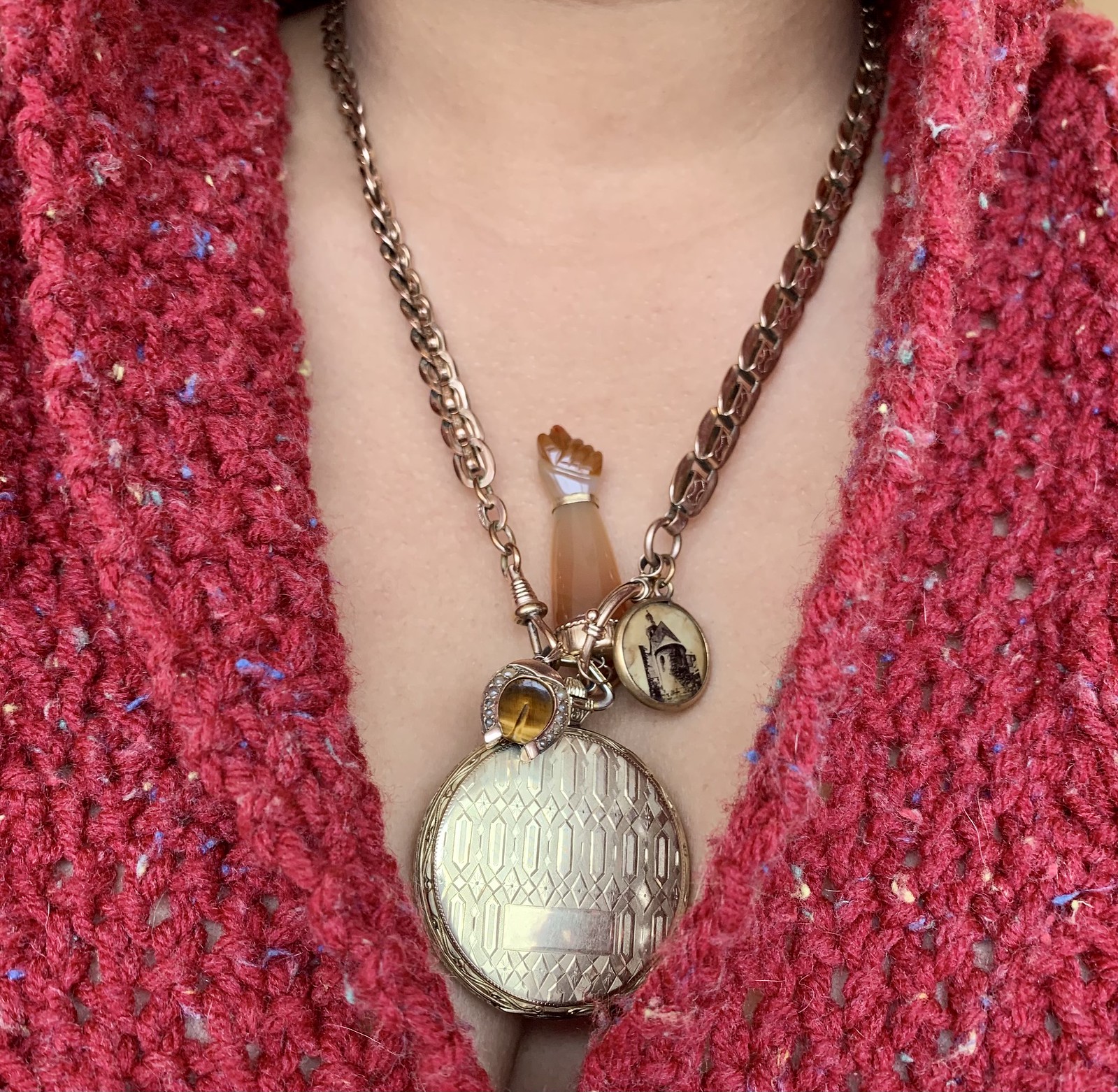
Today’s Jewelry Collection Story comes from Nia of @GemCorps – Nia is based out of California and although she’s loved jewelry since she was very young, 2015 would be the official date her jewelry career started. She has amazing style and loves the stories behind the jewels just as much as the jewels themselves. Many jewelry enthusiasts know her for her “Sweet CHAIRiot” pendant which features a gold folding chair with an even bigger meaning behind it. So excited to share Nia’s jewels and story:
“I’ve been collecting jewelry since my girlhood; vintage jewelry since teenagehood; and I started picking up antique pieces in my early twenties when I was a luxury goods and fine jewelry publicist.
The @gemcorps profile reads “staunch centenarian,” so I’m drawn to the Belle Epoque era which encompasses my favorite fine jewelry design periods: Victorian, Art Nouveau and Edwardian. The quirkiness, the nature themes, the delicately laced filigree and sentimental motifs of buckles and lockets, just sing to me. I also collect horseshoes, opal and moonstone jewelry, and one can never have too many owls. Finding an exquisite Art Nouveau bat would just make my year.”
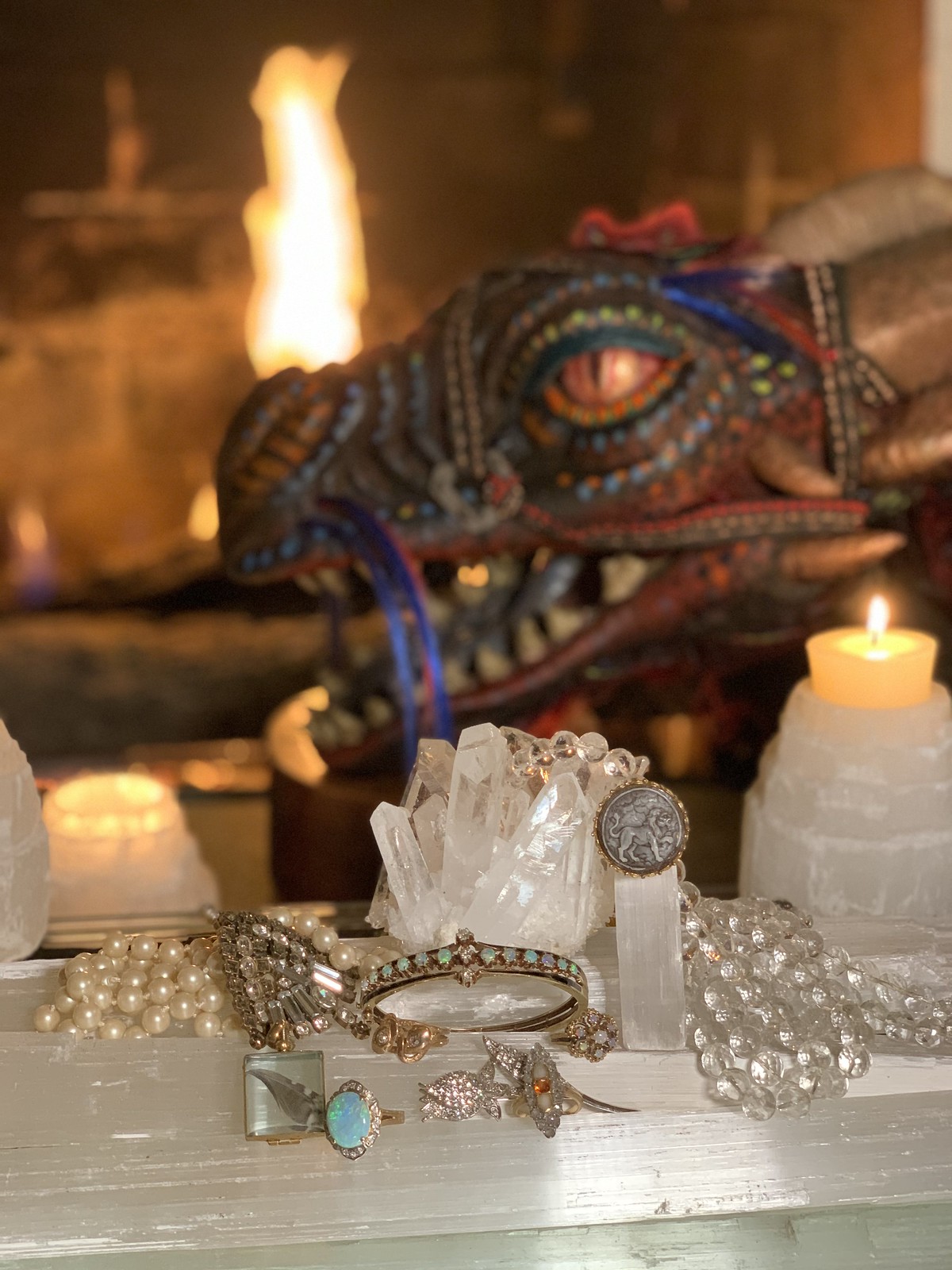
“Jewelry represents many of the qualities that I value most in this life, which are the natural world, creativity/design and storytelling. The fine stuff wouldn’t be so fine without us collaborating with the earth’s gifts, so there’s a beautiful marriage of humans using and being inspired by natural resources to create these very personal objets d’ art. Fascinating! That being said, I prefer the pieces that have lived a few lives and therefore don’t require further devastation of the Mother Planet, including the impact on indigenous communities. With multi-lineage jewelry—antique, vintage and estate—- my passion for storytelling and story-learning is stimulated as well. Where are the raw materials from? Who created it and how? What’s the human lineage of the piece? Researching these questions is something that I delight in. Also the ceremonial significance of jewelry has been very powerful throughout our existence. Love, pride, rites of passage, protective properties, celebration—they all come through. Certainly as I select my jewelry wardrobe, I think about what fortification I need that day, and if it happens to go with the rest of the outfit—great! It’s such a timeless pursuit and I’m grateful to be able to express myself through jewelry.”
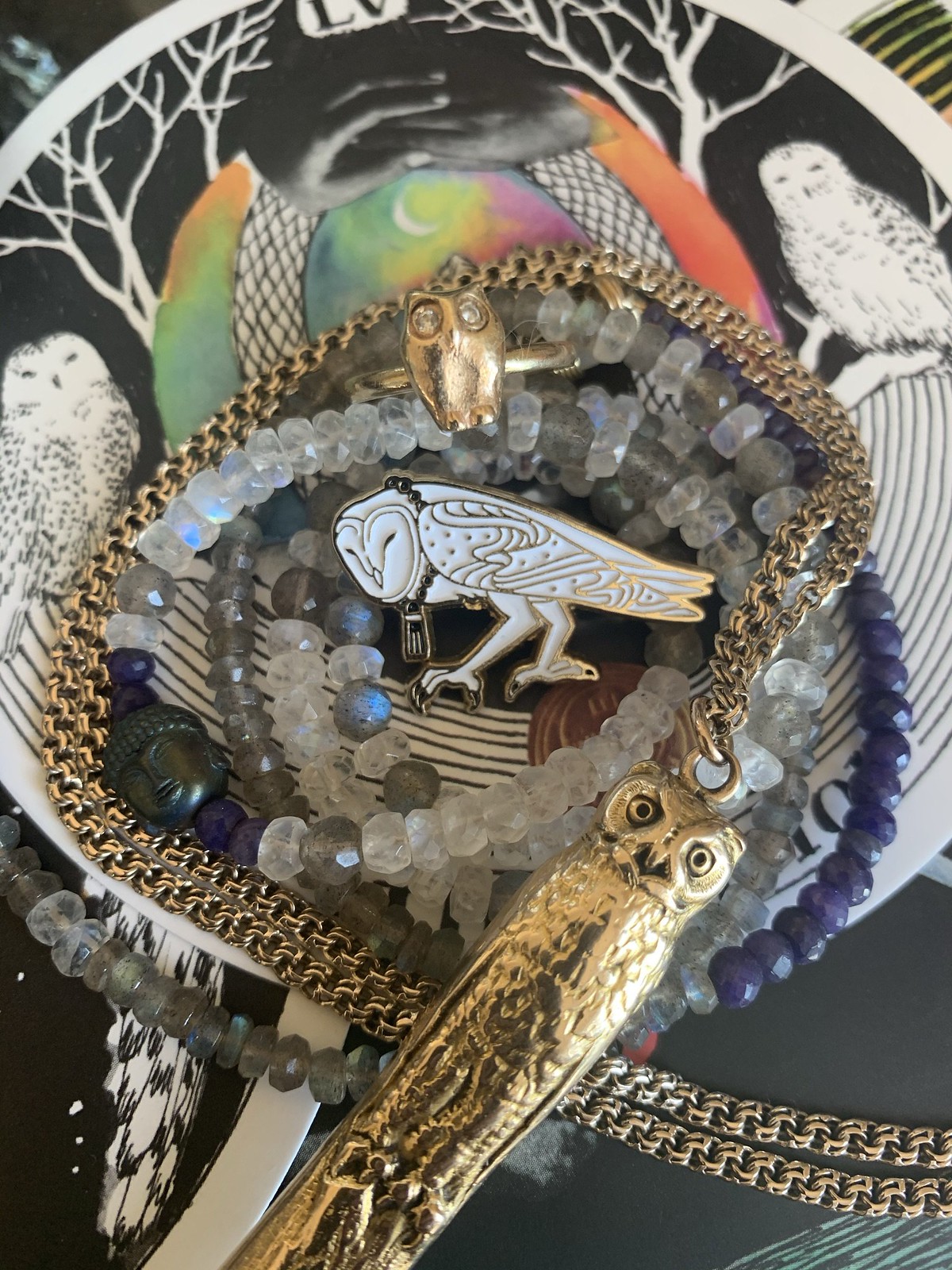
“A certain social media app is one of my primary sources for treasure hunting and then I mostly buy from small, independent dealers. When I travel, it is ON! I have very fond memories of getting lost in the centuries old neighborhoods of Fes and Barcelona; spending hours in antiques shops coast-to-coast; and combing the aisles of fairs and gem shows. I can hunt tirelessly. It’s scary. I’m my father’s daughter.”
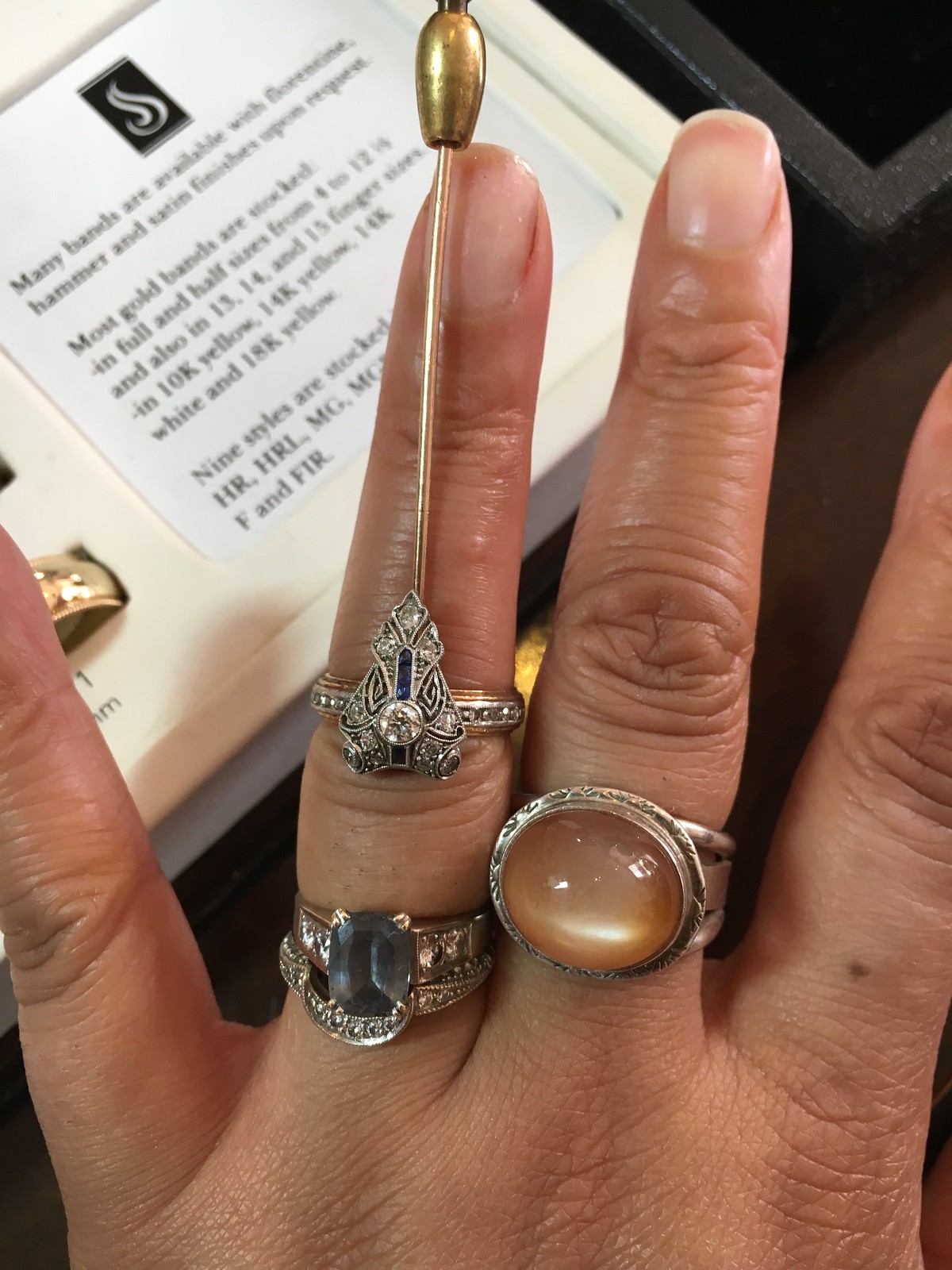
“Do I have any pieces with a special story behind them? They all do. That’s why I do this! There’s a unique conversion ring that I call The Cardinal. At Marin French Market, I purchased an exquisite Edwardian stick pin made of platinum, diamonds and calibre sapphires. My intention was to turn it into a ring, with the head having the capability to sit both North-South and East-West. My jeweler came up with a semi-fixed mechanical piece mounted at the back of the head with a tiny rod and affixed to the Art Deco band via a housing. After some wear, the soldering failed, so I recently had it fixed and another jeweler improved upon the initial design. It’s fabulous mash-up of eras and styles.”
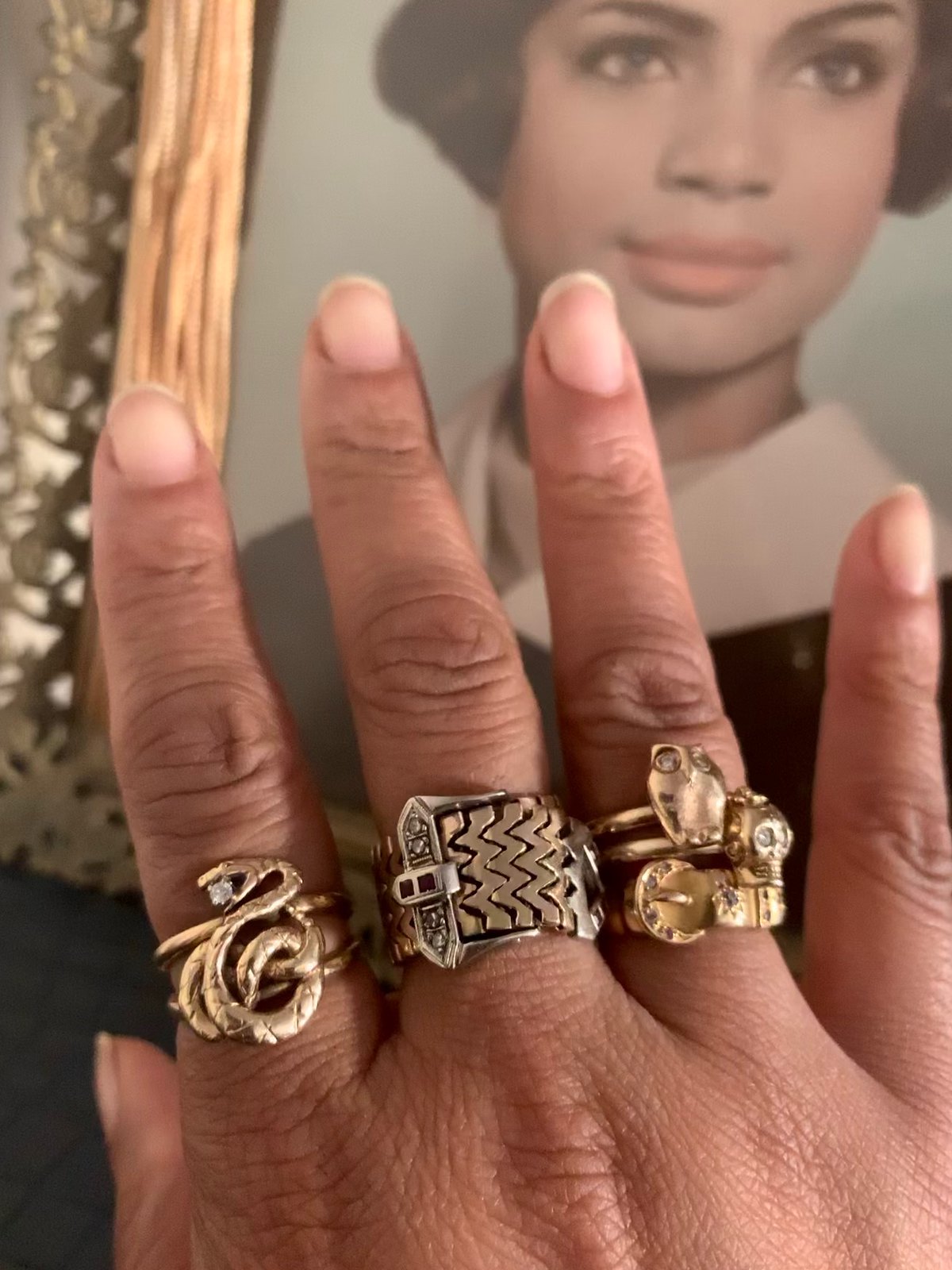
“Mabel Celia Guinn Ashe, our Grandma, was often seen layering beautiful, long gold necklaces with lockets, a Nefertiti pendant, a MOM charm, rings and bangles—even in her housecoat! “Gma” gave me my first pair of pearl studs and my first nice watch, a Benrus. Gold bracelet and necklace, Grandma. Mother-of-pearl pendants, Grandma. Mabel believed in spending her hard earned money on things that held some value and would stand up to time. Today I wear her mid-century modern onyx and gold ring and her Longines Wittnauer timepiece. They’re the only two pieces in my collection that truly are irreplaceable.”

